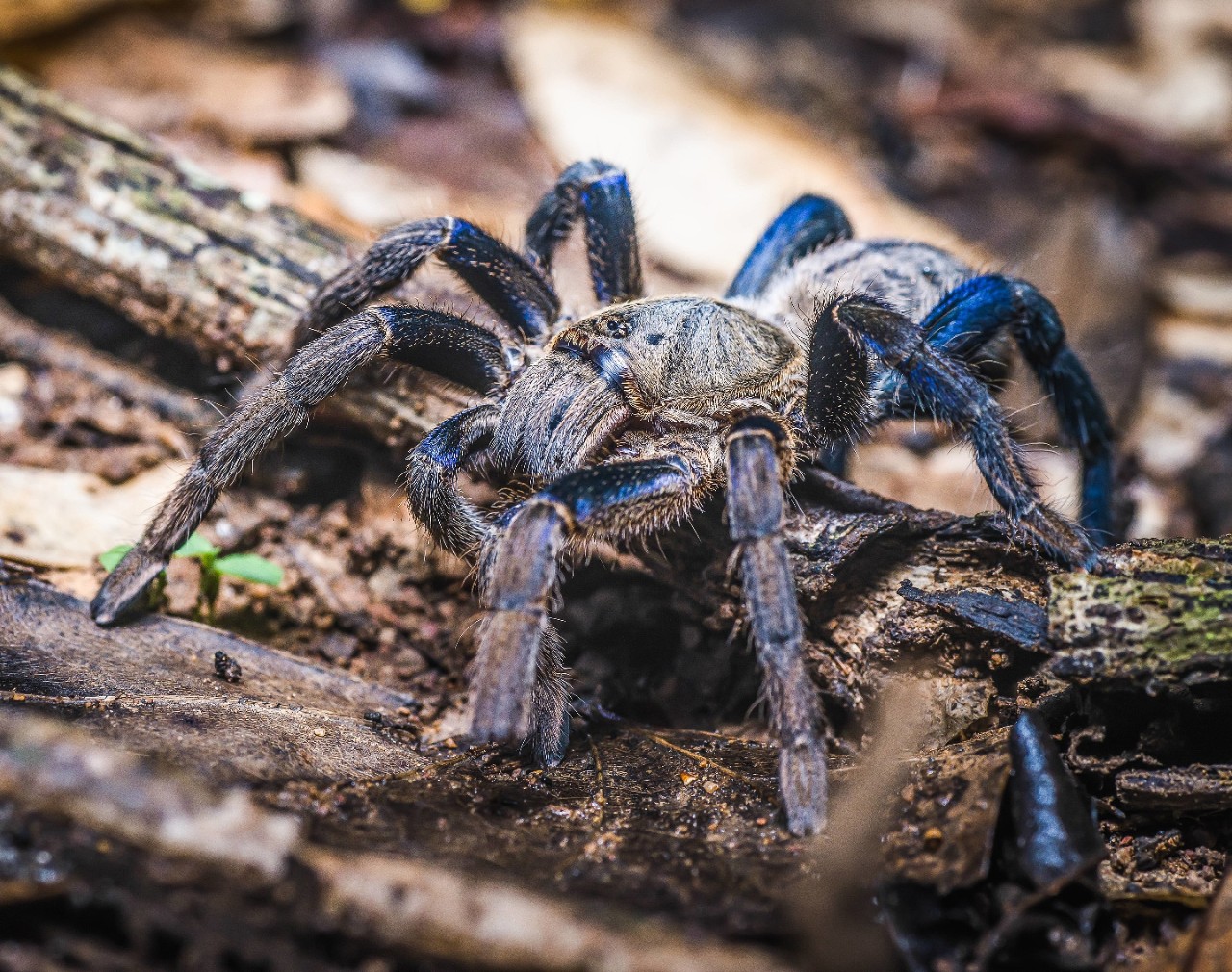
NYT: Why so blue, tarantula?
UC biologist Nathan Morehouse discusses surprising color vision in giant spiders
The New York Times reached out to a University of Cincinnati biologist to get his reaction to a study that found surprising color vision in tarantulas.
Many of these enormous, hairy spiders have subdued colors like blacks and browns. But one species called the greenbottle blue has vivid metallic-blue legs that make the spider stand out rather than blend in with its rainforest background.
The National University of Singapore found that tarantulas have a considerable diversity of the genes responsible for light and color sensitivity in vision. Its findings refute the long-held scientific consensus that tarantulas have poor color vision.

UC biologist Nathan Morehouse, far right, is working with researchers from six other countries on a three-year field project to study jumping spiders around the world. Follow their progress on Twitter and Instagram at #SeeingColorEvolve. Photo/Provided
UC associate professor Nathan Morehouse in UC's College of Arts and Sciences is an expert on spider vision. He is working on a three-year project to understand the evolution of spider vision around the world. It's supported by a grant from the National Science Foundation.
“I’m thrilled,” Morehouse told The Times. “This makes tarantulas a very exciting group moving forward to think about.”
Morehouse was not part of the study but coincidentally traveled to Singapore to study jumping spiders there for part of his NSF project. He shares his international fieldwork on Twitter and Instagram at #SeeingColorEvolve.
"While we can ooh and aah about how beautiful they can be, it's also striking how little we know about what that beauty looks like to them," Morehouse told The Times. "And I think that's true of so many animals."
UC biology professor George Uetz found equally surprising color vision present in wolf spiders, which unlike many jumping spiders have muted colors that help the tiny predators blend in with the leaf litter.
Featured image at top: A greenbottle blue tarantula. Photo/Peter Coxhead/Wikimedia Commons

In his lab, UC biology professor George Uetz found surprisingly broad color vision in wolf spiders, which are camouflaged to blend in with the leaf litter. Photo/Joseph Fuqua II/UC Creative + Brand
Related Stories
News Cincinnati loved in 2025
January 2, 2026
The story of prohibition bootlegger George Remus was among WLWT's favorite segments in 2025. UC Law Professor Christopher Bryant spoke with journalist Lindsay Stone about Remus using a temporary insanity defense during a murder trial.
What to know about this year’s big tax changes
January 2, 2026
Local 12 reported that taxpayers can expect some major changes this tax season. Gary Friedhoff, adjunct instructor at the University of Cincinnati’s Carl H. Lindner College of Business, recently spoke to Local 12 about how to avoid surprises.
Study finds police officers face higher long-term health risks
January 2, 2026
J.C. Barnes, a University of Cincinnati professor, is interviewed by Spectrum News about new research showing that the physical and psychological demands of law enforcement can contribute to earlier deaths.
